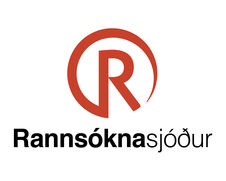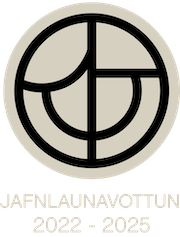Hráefnisnotkun norrænna manna á Grænlandi - verkefni lokið
Fréttatilkynning verkefnisstjóra
Byggðir norrænna manna á Grænlandi lögðust í eyði á 15. öld og hefur löngum verið talið að þar hafi verið harðbýlt mjög, skortur á hráefnum og samfélagið háð innflutningi á ýmsum lífsnauðsynjum. Verkefnið miðaði að því að greina stór söfn af trjáleifum og steingripum sem fundist hafa við
fornleifauppgrefti til að byggja upp heildstæða mynd af hráefnisöflun Grænlendinga.
Meira en 8000 viðarsýni, frá fjórum bæjarstæðum í Eystribyggð og einu í Vestribyggð voru greind, sem og tæplega 2000 steingripir, frá tveimur bæjarstæðum í Eystribyggð. Sáralítil merki sáust um innflutning og eru þau að mestu bundin við biskupssetrið í Igaliku (Görðum) en þar fundust m.a. viðarleifar sem geta aðeins verið komnar frá austurströnd meginlands Ameríku og sýna að Grænlendingar hafa haldið uppi siglingum þangað meðan byggðin varði. Í meginatriðum voru Grænlendingar þó sjálfum sér nógir og höfðu aðgang bæði að birkiskógum í nágrenni bæjarstæðanna og rekaviði sem hefur þurft að sækja lengra að. Engar breytingar urðu á aðgengi að skóglendi eða reka meðan byggðin hélst og ekkert sem bendir til hráefnisskorts. Hinsvegar var greinilegur munur á aðgengi eftir þjóðfélagsstöðu – biskupssetrið var nærri eitt um aðgang að innflutningi frá Evrópu og Ameríku og hafði líka meira af reka en meðalbýlin. Þrátt fyrir að búa ekki við skort þurftu Grænlendingar að sækja mjög langt til að
útvega hráefni eins og timbur og steinefni og er ein meginniðurstaða verkefnisins að mikill kostnaður við hráefnisöflun hafi verið veikleiki í hagkerfi Grænlendinga.
English:
The Norse settlements in Greenland became extinct in the 15th century and it is conventionally
thought that they were never fully sustainable and depended on imports of basic necessities. The
project aimed to develop fact-based understanding of Norse Greenlandic resource utilisation by
analysing large assemblages of wood and stone from archaeological investigations. More than 8000 wood samples, from four sites in the Eastern settlement and one in the Western, were analysed as well as nearly 2000 stone artefacts from two sites in the Eastern settlement. Imports are negligible and are almost exclusively associated with the one high status site, the episcopal seat in Igaliku (Garðar). The imports included a small number of wood pieces which must come from the east coast of mainland America, enough to show that such expeditions took place throughout the Norse period but too few to have been economically significant. The principal result is that the Norse Greenlanders had adequate access to wood in the form of native woodlands close to the farms and driftwood which needed to be sourced further away. There were no changes in availability through tie and nothing to indicate shortages. There were however significant differences in access according to social status, with the bishop’s manor monopolising imports from Europe and America and also having better access to driftwood. Although they were self sufficient in these basic resources the cost of sourcing both stone and driftwood over very long distances will have been considerable and represented a vulnerability for the Norse Greenlandic economy.
Information on how the results will be applied
The project has resulted in robust datasets and rich contextual data which will provide the basis for further research on the logistics of resource procurement in Norse Greenland as well as comparative studies involving the wider North Atlantic, the Arctic and generally of societies living in marginal environments.
∙ A list of the project’s outputs
∙ Lísabet Guðmundsdóttir 2021, ‘Wood procurement in Norse Greenland (11th to 15th c. AD).’
Journal of Archaeological Science 134: 105469. https://doi.org/10.1016/j.jas.2021.105469
Lísabet Guðmundsdóttir 2022, ‘The Utilisation of Native Woodland in Norse Greenland."
Environmental Archaeology (2022): 1-17. https://doi.org/10.1080/14614103.2022.2031839
Lísabet Guðmundsdóttir 2022, ‘Driftwood utilisation and procurement in Norse Greenland.’
∙ Acta Borealia 39, 138-67. https://doi.org/10.1080/08003831.2022.2131089
∙ Lísabet Guðmundsdóttir forthcoming, ‘Timber imports to Norse Greenland. Lifeline or Luxury.’
Antiquity
∙ Lísabet Guðmundsdóttir forthcoming, The utilisation of Wood in Norse Greenland, PhD-thesis,
University of Iceland.
∙ Guðrún Alda Gísladóttir & Sólveig Guðmundsdóttir Beck forthcoming: Subsistence in Stones in the Norse Eastern Settlement, Southwest Greenland.
∙ Sólveig Guðmundsdóttir Beck forthcoming: ‘Geochemical Mapping of Soapstone Vessels from
Igaliku and Tatsip Ataa in Norse Southwest Greenland.’
∙ Sólveig Guðmundsdóttir Beck forthcoming: ‘Whetstones of the Norse Greenlanders.’
∙ Orri Vésteinsson et al. eds. forthcoming: Far and wide: Resource utilisation in Norse Greenland.
Edited volume coming out of planned final conference, publication date: 2023.
Heiti verkefnis: Stokkar
og steinar. Hráefnisnotkun norrænna manna á Grænlandi / Sticks and stones. Raw
material use in Norse Greenland
Verkefnisstjóri: Orri Vésteinsson, Háskóla Íslands
Tegund styrks: Verkefnisstyrkur
Styrktímabil: 2018-2020
Fjárhæð styrks kr. 55.918.000
Tilvísunarnúmer Rannís: 185055


